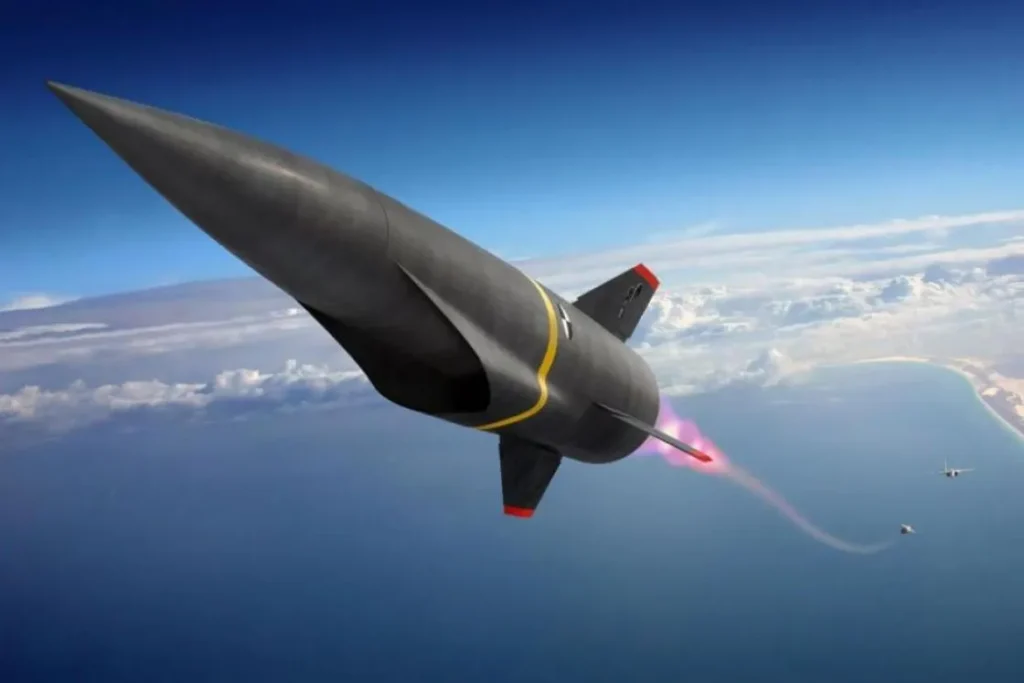Vertical Farming: A Green Revolution in the Age of Urban Expansion 2025
Introduction
In a world where the population is rapidly increasing, and arable land is dwindling due to urban expansion, desertification, and climate change, the search for innovative solutions to ensure food security has become an urgent necessity. Vertical farming emerges as one of the most prominent of these solutions, offering a new vision for sustainable food production. Agriculture is no longer confined to vast fields; instead, it’s moving into the heart of cities, inside buildings, in multiple layers, leveraging modern technology to maximize resource utilization. This transformation is not just an agricultural innovation; it’s a paradigm shift in the concept of urban sustainability, redefining humanity’s relationship with its environment and its food source. It’s not merely a method for growing crops but an integrated system combining engineering, science, and technology to produce food in fully controlled environments, opening unprecedented horizons for global food security and reducing agriculture’s environmental footprint.
What is Vertical Farming?
Vertical farming is the practice of growing crops in vertically stacked layers, often integrated into buildings, repurposed shipping containers, or warehouses, using soil-less farming techniques such as hydroponics, aeroponics, and aquaponics. The goal of these techniques is to achieve maximum productivity in a limited ground footprint, with complete control over the environmental conditions surrounding the plants, including lighting, temperature, humidity, carbon dioxide concentration, and nutrition. The success of these systems largely depends on artificial lighting, such as LED lamps, which provide the optimal light spectrum for plant growth 24/7, regardless of external weather conditions. Vertical farming can be implemented in urban environments to produce a wide range of crops like leafy greens, herbs, small fruits, and some root vegetables.
Benefits of Vertical Farming
The benefits of vertical farming extend beyond environmental aspects to include significant economic and social advantages, making it a promising solution to global food challenges.
A. Environmental Benefits:
- Reduced Water Consumption: Vertical farming is highly water-efficient. Closed-loop systems recycle water used for irrigation, reducing water consumption by up to 95% compared to traditional farming. This offers a radical solution for water-scarce regions and helps conserve groundwater and surface water resources.
- Minimized Land Use: Vertical farming enables the cultivation of vast quantities of crops in very small spaces, easing pressure on agricultural land and contributing to halting urban sprawl over fertile areas. This preserves biodiversity and supports reforestation efforts and the conservation of natural ecosystems.
- Reduced Pesticide and Chemical Fertilizer Use: Since farming occurs in a controlled, enclosed environment, the likelihood of plants being exposed to pests and diseases is significantly reduced, eliminating the need for harmful pesticides. Furthermore, hydroponic and aeroponic systems allow for precise nutrient control, minimizing fertilizer waste and contributing to reduced chemical pollution of soil and water.
- Lower Carbon Emissions: Vertical farming substantially cuts carbon emissions associated with transportation, as crops are grown close to consumption centers, shortening the distance products need to travel from farm to consumer. This reduces fossil fuel consumption and aids in combating climate change.
- Year-Round Production: Vertical farming is unaffected by external weather conditions or seasonal changes, allowing for continuous, year-round crop production. This enhances the sustainability of food supplies and reduces reliance on imports.
B. Economic Benefits:
- Fresh Local Produce: Vertical farming helps provide fresh, high-quality products to local consumers, reducing the need for food imports and supporting local economies. Locally produced food often has higher nutritional value because it’s harvested at its peak ripeness and reaches the consumer quickly.
- Job Creation: Operating and managing vertical farms requires specialized skills in agricultural engineering, technology, and management, contributing to the creation of new and diverse job opportunities in the modern agricultural sector.
- Enhanced Food Security: By producing food locally and continuously, vertical farming boosts food security for cities and nations, reducing exposure to global food price fluctuations and supply shortages caused by natural disasters or crises.
- Reduced Transportation and Storage Costs: Since crops are grown near markets, transportation and storage costs are significantly lower, contributing to a reduction in the final product cost and increased profit margins for farmers.
- Energy Efficiency (Long-term): Although the cost of artificial lighting might be high initially, advancements in LED technology and improved system efficiency contribute to reduced long-term energy consumption. Furthermore, using renewable energy (such as solar or wind power) to power these farms can further reduce their carbon footprint and contribute to their sustainability.
Challenges of Implementing Vertical Farming
Despite its numerous benefits, vertical farming faces certain challenges that must be overcome to achieve widespread adoption and realize its full potential:
- High Initial Cost: The cost of establishing vertical farms is relatively high, especially concerning infrastructure, lighting systems (LEDs), environmental control systems, and the technologies required for water and nutrient management. These costs can be a barrier for small investors.
- Energy Consumption: While LED lamp efficiency has improved, energy consumption for lighting, air conditioning, and ventilation remains a significant challenge, especially if renewable energy sources are not utilized. A balance must be struck between production and energy cost.
- Technical Expertise: Vertical farming requires specialized technical knowledge in hydroponics, aeroponics, environmental control, and automation systems. Finding a sufficiently trained workforce for these complex systems can be challenging.
- Limited Crop Scope: Currently, most vertical farms focus on growing leafy greens, herbs, and small fruits, which grow quickly and yield good returns. Growing staple crops like grains and large root vegetables is generally not economically viable at present due to their larger space and higher energy requirements.
- Continuous Research and Development Needs: To improve system efficiency, reduce costs, and expand the range of crops that can be vertically farmed, there is a critical need for continuous investment in research and development.
- Marketing Challenges: Despite the quality of the products, farmers may face challenges in marketing their produce, especially if prices are slightly higher than traditional products due to the high cost of production.
Examples of Cities Adopting Vertical Farming
Many cities worldwide have embraced vertical farming, highlighting its potential as a future solution for urban food security:
- Singapore: As a small, densely populated nation with limited land resources, Singapore is a global leader in adopting vertical farming. Both government and private institutions have heavily invested in large-scale vertical farms, such as Sky Greens, to boost local vegetable production and reduce reliance on imports.
- Dubai (UAE): Facing climatic challenges of water scarcity and arable land, Dubai has strongly moved towards vertical farming. Bustanica, the world’s largest vertical farm, owned by Emirates Flight Catering, produces massive quantities of leafy greens daily to meet the needs of travelers and consumers in the emirate.
- Tokyo (Japan): Japan suffers from a lack of agricultural land and challenges from natural disasters, pushing it towards vertical farming as a strategic solution. There are many large vertical farms operating entirely under LED lighting, such as Spread’s Techno Farm, producing various types of vegetables.
- New York and Chicago (USA): Major American cities have seen significant growth in vertical farming, particularly in abandoned warehouses and industrial buildings. Companies like AeroFarms in New Jersey and Gotham Greens in New York and Chicago are pioneers in this field, supplying fresh vegetables to restaurants and grocery stores in urban areas.
- Amsterdam (Netherlands): Known as an agricultural powerhouse, the Netherlands has adopted vertical farming as part of its strategy to increase agricultural production efficiency. There are numerous research and commercial projects focusing on developing vertical farming techniques and improving energy consumption.
Our Vision for the Future
We believe that vertical farming is not just a modern technology but a fundamental pillar for a sustainable and more food-secure future. In the near future, we anticipate that vertical farming will undergo tremendous developments making it more efficient and economical:
- Lower Costs and More Efficient Technologies: With continued research and development, the costs of establishing and operating vertical farms will significantly decrease. LED lights will become more efficient and consume less energy, and automation and robotics systems will reduce the need for human intervention, lowering operational costs.
- Expanded Crop Scope: Scientists and engineers will be able to expand the range of crops that can be grown vertically to include staple crops like grains and some larger fruits, by improving environmental conditions and developing plant varieties adapted to indoor growing environments.
- Integration with Smart Cities: Vertical farms will become an integral part of smart city infrastructure, integrated into mixed-use buildings, shopping centers, and even homes. They will be part of an integrated urban ecosystem that contributes to resource cycling and waste reduction.
- Maximizing Data and AI Utilization: Big data and artificial intelligence will be used to greatly improve the efficiency of vertical farms, by predicting production, optimizing resource use, early diagnosis of plant diseases, and customizing optimal growth conditions for each crop type.
- Food Solutions for Remote and Challenging Areas: Vertical farming will provide an ideal solution for fresh food in remote areas, space stations, and even harsh environments that do not support traditional agriculture.
- Enhanced Environmental Awareness and Food Health: Vertical farming will contribute to increasing awareness of the importance of healthy, sustainable food, and encourage consumers to understand their food source and production process.
Conclusion
Vertical farming is not just a passing trend; it is an urgent necessity to address global food security and climate change challenges. It offers an innovative model for sustainable agriculture that contributes to environmental protection, strengthens local economies, and provides fresh, safe food to urban communities. Despite the current challenges, continuous advancements in technology and scientific research will make it accessible to everyone, becoming an integral part of our daily lives. It is a true green revolution that redefines the concept of agriculture, heralding a future where every city can become a producer of its own food, thereby achieving food security and environmental sustainability for future generations.
Institutions Adopting Vertical Farming
Here are some of the key institutions and companies that have embraced and are leading the way in vertical farming:
- Sky Greens (Singapore): One of the pioneers in commercial vertical farming, known for its multi-layered hydroponic system.
- AeroFarms (USA): A leading vertical farming company that uses aeroponics and aims to transform agriculture by growing produce indoors.
- Gotham Greens (USA): Operates a network of high-tech greenhouses and vertical farms in urban areas across the United States.
- Spread (Japan): Known for its “Techno Farm” in Kyoto, which uses fully automated processes and LED lighting to produce vast quantities of lettuce.
- Bustanica (UAE): The world’s largest vertical farm, operated by Emirates Flight Catering, focused on producing leafy greens for airlines and local consumers.
- Plenty (USA): A vertical farming company utilizing advanced LED lighting and data analytics to optimize crop growth.
- Vertical Harvest (USA): A Wyoming-based vertical farm focused on providing employment opportunities for people with disabilities while growing fresh produce.

© 2025 upcorehub.com All rights reserved.


